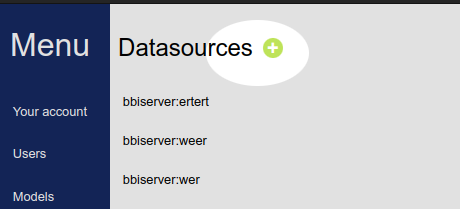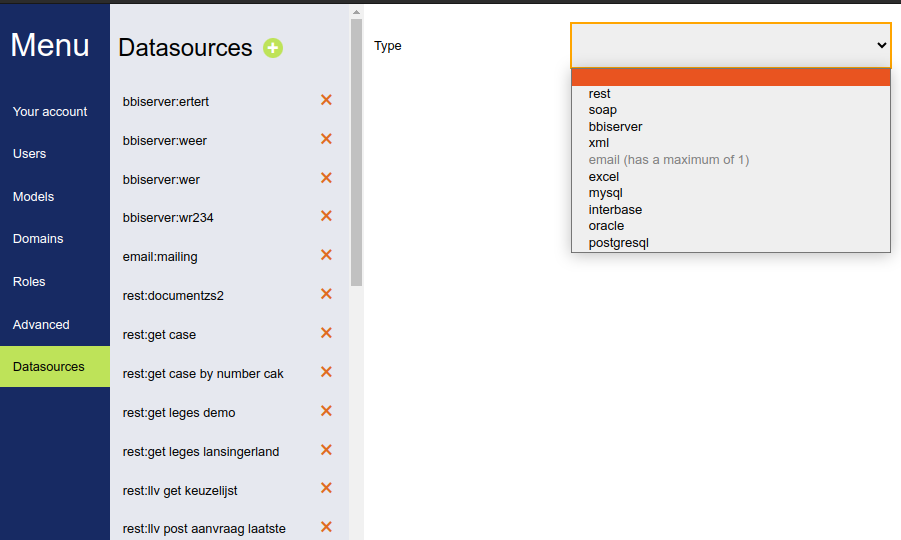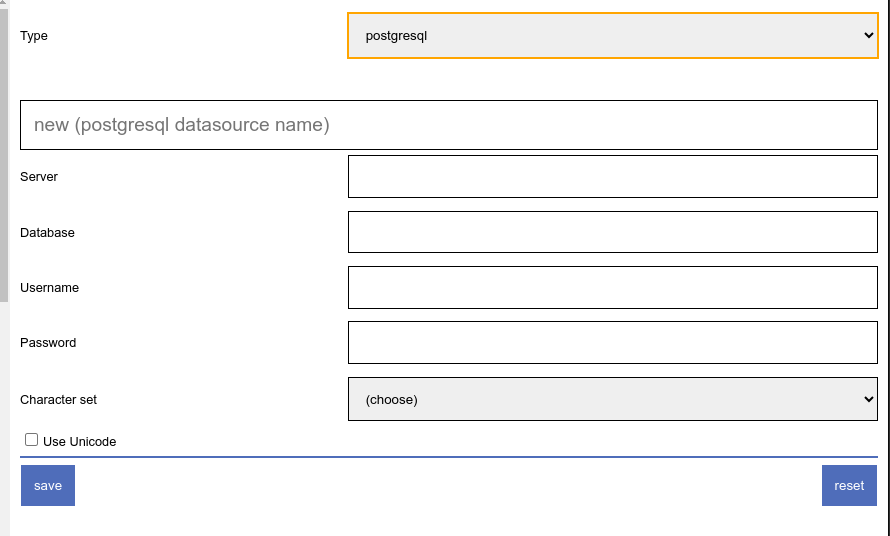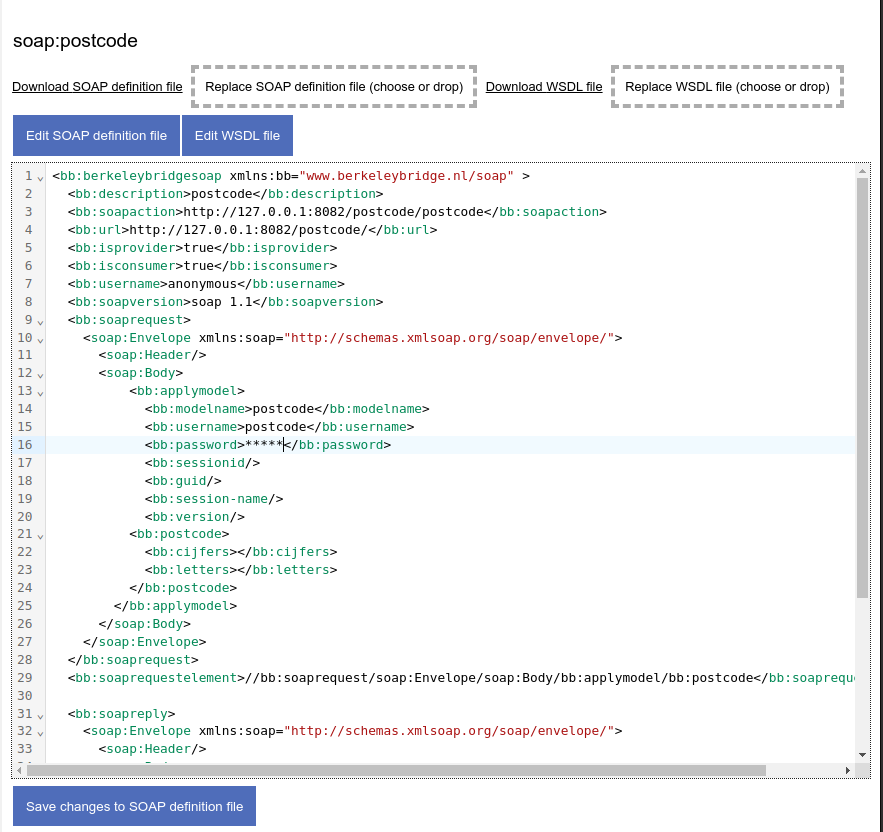Data sources
xxllnc Expertsystemen can connect with Interbase databases, Oracle databases, MySQL databases, PostgreSQL databases, XML files, SOAP servers, and REST servers, and it can send emails.
These connections are called ‘data sources’.
First, we’ll run through the process of defining data sources. The next articles in this chapter are devoted to explaining the usage of each type.
Select the menu option Resources > Data sources to manage the data sources. This screen is also found in the xxllnc Expertsystemen Runner.
Select the type of connection you want on the left side of the screen. The [New] button will display the type you have selected.
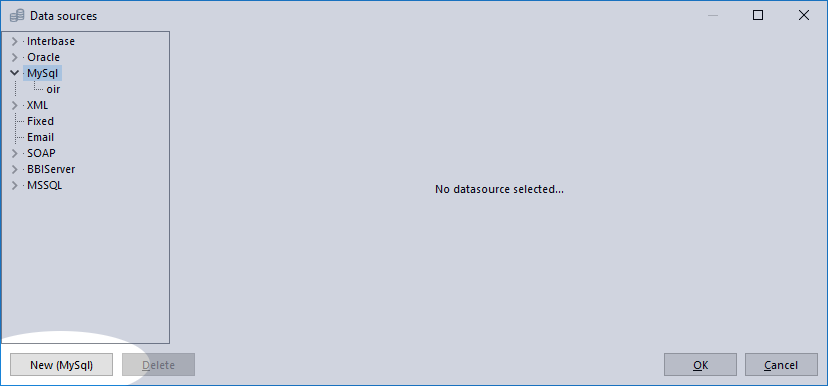
If you press the [New] button, a new data source will be created. You can rename the data source by selecting the data source in the tree on the left and pressing [F2], or by using the right mouse button and selecting Rename. It is also possible to connect with SOAP, but the definition of a SOAP connection is done with the use of a separate XML-file.
In the screen Data sources you can see the description of the SOAP connection but you cannot edit it.
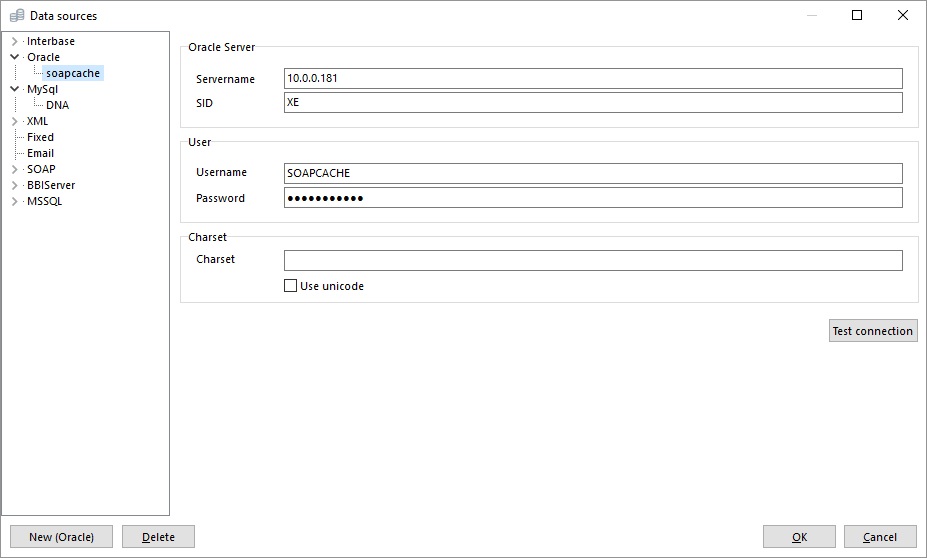
See below for a quick overview of the various data source types with short descriptions of the required parameters.
Interbase
An Interbase-/Firebird connection needs the following parameters:
- Server name : URL to the database server
- Database file: file name of the database, with the path relative to the server (this has to be a local path)
- Username: username for the database
- Password: password for the database
- Role: database role in Firebird or Interbase
- Charset : the character set of the database
- Use Unicode : if wanted, Unicode can be used
With the button Test connection you can check if the settings are correct.
Oracle
An Oracle connection needs the following parameters:
- Server name : URL to the database server
- SID: the databases’ SID
- Username: username for the database
- Password: password for the database
- Charset : the character set of the database
- Use Unicode : if wanted, Unicode can be used
MySQL
A MySQL connection needs the following parameters:
- Server name : URL to the database server
- Database file: file name of the database, with the path relative to the server (this has to be a local path)
- Username: username for the database
- Password: password for the database
- Charset : the character set of the database
- Use Unicode : if wanted, Unicode can be used
XML
An XML connection needs the following parameters:
- Filename : the full local path to the XML file and the filename (NOTE: absolutely no spaces allowed).
For a tutorial on how to send an e-mail, see our tutorial on sending mail. An Email connection needs the following parameters:
- Servername: SMTP server address
- Server port: SMTP server port (default 25)
- Username: user name (optional, depending on the server settings)
- Password: password (optional, depending on the server settings)
- Security:
- No security (information is not protected on the internet)
- Implicit SSL (information is a little protected on the internet)
- Explicit SSL (information is quite good protected on the internet)
SOAP
A SOAP connection is defined in an XML file. For more information, see SOAP connection definitions.
REST
A REST connection is defined in an XML file. For more information, see REST connection definition.
